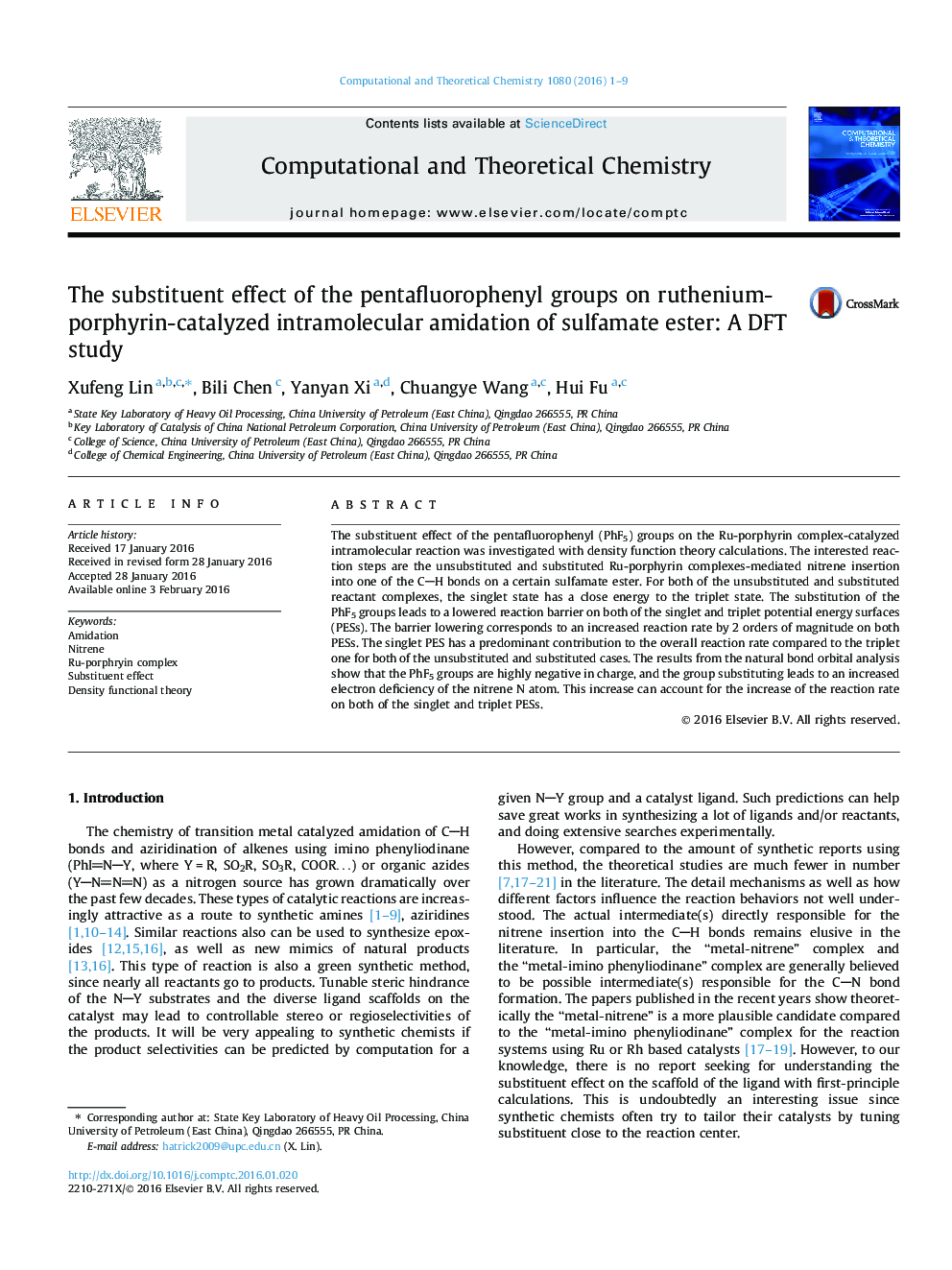| Article ID | Journal | Published Year | Pages | File Type |
|---|---|---|---|---|
| 5392782 | Computational and Theoretical Chemistry | 2016 | 9 Pages |
â¢The substituent effect was studied for the reaction behavior of Ru-nitrene complex.â¢Substitution of the PhF5 groups leads to a lowered reaction barrier.â¢Substitution of the PhF5 groups increases the reaction rate by 2 orders of magnitude.â¢Increased electron deficiency of the nitrene results in the increased reaction rate.
The substituent effect of the pentafluorophenyl (PhF5) groups on the Ru-porphyrin complex-catalyzed intramolecular reaction was investigated with density function theory calculations. The interested reaction steps are the unsubstituted and substituted Ru-porphyrin complexes-mediated nitrene insertion into one of the CH bonds on a certain sulfamate ester. For both of the unsubstituted and substituted reactant complexes, the singlet state has a close energy to the triplet state. The substitution of the PhF5 groups leads to a lowered reaction barrier on both of the singlet and triplet potential energy surfaces (PESs). The barrier lowering corresponds to an increased reaction rate by 2 orders of magnitude on both PESs. The singlet PES has a predominant contribution to the overall reaction rate compared to the triplet one for both of the unsubstituted and substituted cases. The results from the natural bond orbital analysis show that the PhF5 groups are highly negative in charge, and the group substituting leads to an increased electron deficiency of the nitrene N atom. This increase can account for the increase of the reaction rate on both of the singlet and triplet PESs.
Graphical abstractDownload high-res image (121KB)Download full-size image
